Note: This novel was SHORTLISTED for both the Booker Prize in 2009 and the Walter Scott Prize in 2010.
“I am a poet of space and form. Of light, of light and space and form. Architects are people who build walls and floors and roofs. I capture and enclose the space within…”—Rainer von Abt
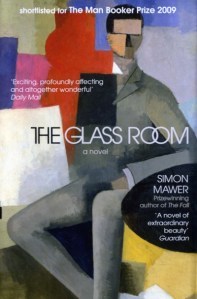 While on their honeymoon in Venice, Czech citizens Viktor and Liesl Landauer meet architect Rainer von Abt at a party given by an acquaintance in an ancient palazzo. The next day he shows them display models of the dramatically different buildings he has been creating, and after indicating that he was once a student of Adolf Loos, who hails from their Czech city (known here as Mesto), he extols “the virtues of glass and steel and concrete, and decrie[s] the millstones of brick and stone that hung about people’s necks.” He believes that Mesto is now looking toward the future, and he wants to be part of it, explaining that “Ever since Man came out of the cave he has been building caves around him…But I wish to take Man out of the cave and float him in the air. I wish to give him a glass space to inhabit.” Viktor is enthralled, suggesting, “Perhaps you could design a Glass Space (Glasraum) for us.”
While on their honeymoon in Venice, Czech citizens Viktor and Liesl Landauer meet architect Rainer von Abt at a party given by an acquaintance in an ancient palazzo. The next day he shows them display models of the dramatically different buildings he has been creating, and after indicating that he was once a student of Adolf Loos, who hails from their Czech city (known here as Mesto), he extols “the virtues of glass and steel and concrete, and decrie[s] the millstones of brick and stone that hung about people’s necks.” He believes that Mesto is now looking toward the future, and he wants to be part of it, explaining that “Ever since Man came out of the cave he has been building caves around him…But I wish to take Man out of the cave and float him in the air. I wish to give him a glass space to inhabit.” Viktor is enthralled, suggesting, “Perhaps you could design a Glass Space (Glasraum) for us.”

The house, von Abt believes, “should not look like something. It should just be, a shape without references.” Ultimately, the architect agrees to build the house, “But form without ornament is all I can give you…Here, in the most ornamental city in the whole world [Venice], I am offering you the very opposite.” And after he arrives in Mesto and surveys the site, with its slope down into a garden, he declares, “ I wish not just to design a house but to create a whole world. I want to work from the foundations to the interior, the windows, the doorways, the furnishings, the fabric of the place as well as the structure. I will design you a life. Not a mere house to live in, but a whole way of life…Your abode will be a work of art at which people will wonder.”
And so begins an enthralling tale in which the building of a spectacular and unusual house becomes the framework for a story about the social and political changes which occur in Eastern Europe between the 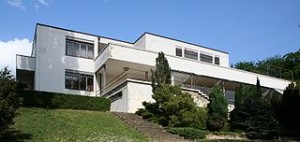 two world wars, all of them affecting the fate of the house and the architect’s dream. But it is also a story of the family, Viktor and Liesl Landauer and their children, who build and live in the house. Though Liesl is a gentile, Viktor is Jewish, and when the National Socialists seize power in Austria and begin their campaign to dominate the Sudentenland of Czechoslovakia, Viktor quickly realizes that they must leave the house, the Glasraum they love, and sell his business (the famed Landauer motor cars) to Liesl’s Christian family, if they are to survive. “If you play with mad dogs, you are going to get bitten,” he declares.
two world wars, all of them affecting the fate of the house and the architect’s dream. But it is also a story of the family, Viktor and Liesl Landauer and their children, who build and live in the house. Though Liesl is a gentile, Viktor is Jewish, and when the National Socialists seize power in Austria and begin their campaign to dominate the Sudentenland of Czechoslovakia, Viktor quickly realizes that they must leave the house, the Glasraum they love, and sell his business (the famed Landauer motor cars) to Liesl’s Christian family, if they are to survive. “If you play with mad dogs, you are going to get bitten,” he declares.
Author Simon Mauer has always created exciting plots with important thematic overtones, and in this novel he outdoes himself, incorporating the broadest scope of any of his novels so far. Beginning in 1929, the story and the history of the house continue up to the 1990s, exploring the sociopolitical traumas of the era, from National Socialism through the Co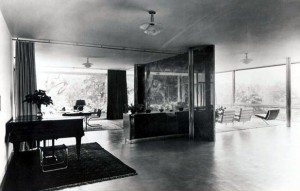 mmunist takeover, and the rebellion and eventual liberation of the country. Subplots and many secondary characters repeat throughout, connecting and reconnecting over the sixty-year time span. Viktor Landauer’s infidelities, including one with a woman who later becomes the nanny of his children and a friend of his wife, set the Nazi takeover into sharp relief, and his eventual arrival in the United States becomes a stopping point in the novel but not its conclusion.
mmunist takeover, and the rebellion and eventual liberation of the country. Subplots and many secondary characters repeat throughout, connecting and reconnecting over the sixty-year time span. Viktor Landauer’s infidelities, including one with a woman who later becomes the nanny of his children and a friend of his wife, set the Nazi takeover into sharp relief, and his eventual arrival in the United States becomes a stopping point in the novel but not its conclusion.
Though Mawer never mentions the real house on which the novel is based, it is easily identifiable as the Tugendhat House, built by Ludwig Mies van der Rohe in what is now Brno, Czechoslovakia. The use of the “Landauer House” as a Nazi office building, a biological research lab, a temporary stable, and a gym for handicapped children, mostly polio victims, parallels some of the uses of the Tugendhat House, as does the eventual restoration of that house, which opened to the public on March 6, 2012.
Mawer’s pacing is flawless. 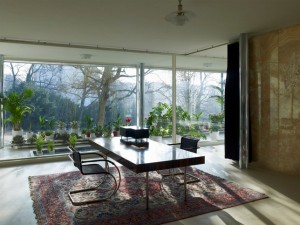 He keeps the reader completely occupied as he explores the issues of the house and the Landauers’ relationship, their friendships (and/or infidelities), and their household staff, which stays behind when they leave. Hana Hanakova, Liesl’s close friend, a sexually adventuresome free spirit, apparently bisexual, expresses her genuine love for Liesl throughout. Even after Liesl leaves the house, Liesl and Hana remain in touch. Kata, hired as the nanny, is Viktor’s mistress, though she and Liesl become good friends, as do their children, with whom they share the Landauer House. Kata and Marika, her daughter, accompany the Landauers when they leave the house, becoming “six characters in search of a home.” Lanik, their untrustworthy chauffeur, assumes the role of caretaker of the abandoned house, eventually becoming an official with the Red Army. As time passes and the various characters make their peace with the circumstances in which they find themselves, for better or worse, the reader feels the whole weight of history unfolding, both politically and emotionally.
He keeps the reader completely occupied as he explores the issues of the house and the Landauers’ relationship, their friendships (and/or infidelities), and their household staff, which stays behind when they leave. Hana Hanakova, Liesl’s close friend, a sexually adventuresome free spirit, apparently bisexual, expresses her genuine love for Liesl throughout. Even after Liesl leaves the house, Liesl and Hana remain in touch. Kata, hired as the nanny, is Viktor’s mistress, though she and Liesl become good friends, as do their children, with whom they share the Landauer House. Kata and Marika, her daughter, accompany the Landauers when they leave the house, becoming “six characters in search of a home.” Lanik, their untrustworthy chauffeur, assumes the role of caretaker of the abandoned house, eventually becoming an official with the Red Army. As time passes and the various characters make their peace with the circumstances in which they find themselves, for better or worse, the reader feels the whole weight of history unfolding, both politically and emotionally.
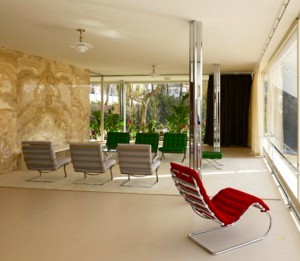 Focusing initially on the story of a great architectural achievement, the novel also explores several stories of love and betrayal; stories of love sanctioned, illicit, and forbidden; and the fraught history of Czechoslovakia (and peripherally, Austria) between the wars. Though few exact dates are provided, the novel reflects the growth of the Nazi movement, the exodus of those Jews fortunate enough to have the means to escape, and the aftereffects on the Landauers, their household, and on the Glass Room. Mawer’s prose is efficient, and his style keeps the reader on pace, never having to stop to figure out what the author “really” means. Filled with vibrant imagery, both of the external and internal worlds of the characters, the novel has something for everyone. Ultimately, the stories of all the characters are resolved, with only one loose end, and readers who enjoy this novel will want to reread the preface for further insights after completing the novel. A fully-developed and thoughtful novel with a unique focus and point of view.
Focusing initially on the story of a great architectural achievement, the novel also explores several stories of love and betrayal; stories of love sanctioned, illicit, and forbidden; and the fraught history of Czechoslovakia (and peripherally, Austria) between the wars. Though few exact dates are provided, the novel reflects the growth of the Nazi movement, the exodus of those Jews fortunate enough to have the means to escape, and the aftereffects on the Landauers, their household, and on the Glass Room. Mawer’s prose is efficient, and his style keeps the reader on pace, never having to stop to figure out what the author “really” means. Filled with vibrant imagery, both of the external and internal worlds of the characters, the novel has something for everyone. Ultimately, the stories of all the characters are resolved, with only one loose end, and readers who enjoy this novel will want to reread the preface for further insights after completing the novel. A fully-developed and thoughtful novel with a unique focus and point of view.
Note: A video showing the inside of this house may be found here:
ALSO by Simon Mawer: TRAPEZE. TIGHTROPE, PRAGUE SPRING
Photos, in order: The author’s photo appears on http://www.amazon.com
The Tugendhat Villa is shown on http://en.wikipedia.org
This black and white photo shows the “honey-colored” onyx wall (center), which features in the action of the novel. Also shown, the piano (left), which is a motif which echoes throughout. http://brnonow.com
The restored dining room and living room, on opposite sides of the onyx wall, are shown on as part of a story on http://www.architizer.com
